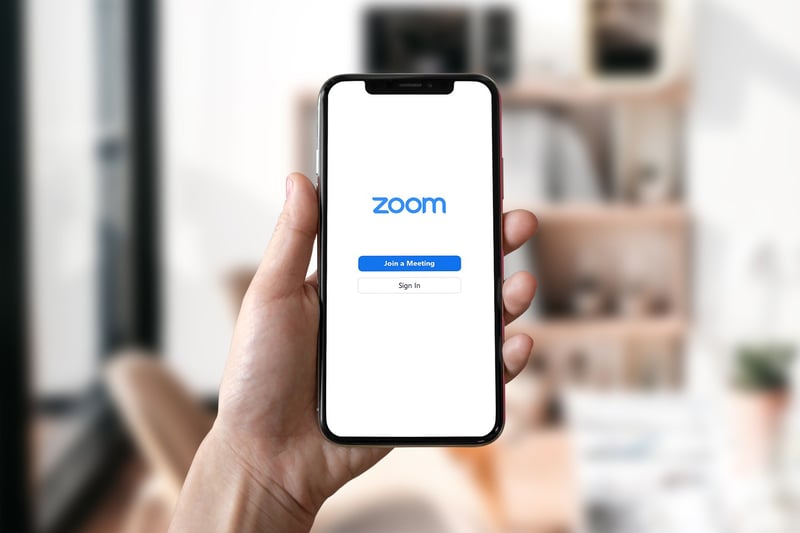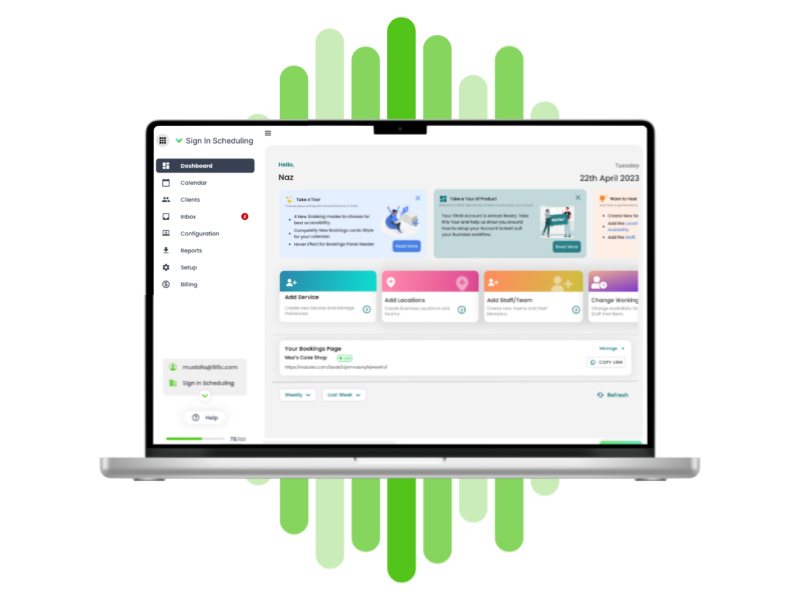Do you want to scale your business? Of course you do! Who doesn’t? One way to increase your income...
Remote Selling Best Practices to Better Your Sales Strategy
Are you a top-notch salesperson who’s looking to take your talent to the virtual world? Whether it be because of the increased flexibility or freedom, remote sales has become more popular than ever. These days, people are looking specifically for remote opportunities when they search for a new job.
But, for salespeople, this isn’t an entirely new concept. Remote selling techniques have been a popular way of doing business for ages. In fact, a lot of companies only hire remote sales reps. It’s an excellent way to save money, find top talent, allow sales managers to hire overseas employees, and allow people from all over the world to make money selling their products online.
But what does it mean to be a successful remote salesperson?
From understanding how remote sellers are different from their in-person counterparts to learning about effective communication strategies, we’ve got all the remote selling best practices you’ll need to know right here!
The top remote selling best practices to implement
Covid-19 has seen working from home transition from a ‘nice-to-have upward trend’ to the ‘new normal’.
If you’re a salesperson who’s used to a quiet, distraction-free office, this ‘new normal’ has probably been a tough transition; Making sales calls from your cluttered kitchen table while your toddler crashes a remote-control car race in the living room is not exactly an ideal work environment.
But, we all have to be adaptable – that’s part of what makes good salespeople after all.
Unfortunately, we can’t offer tips on how to raise an office-friendly 2-year old (does anyone really know that?), but we can dive into detail about how to manage remote sales.
Know your product
Let’s start with a simple one. To be a successful remote seller, you need to know your product inside out. Just like in-person sales, you should be able to answer your client’s questions without hesitation or confusion.
If you’re unsure of anything when it comes to what you are selling, then it can lead to your prospects not fully trusting you. And you probably don’t need me to tell you that lack of trust leads to lack of sales.
So, be sure to spend time getting to know what you’re selling.
Keep track of data points for each sale
It’s absolutely vital that you keep track of data points.
This includes the following:
- Product sold,
- Geographic location (Where was the buyer from?),
- Customer language preference,
- Whether they require a currency conversion,
- Pain points (Why is the customer buying? What issue are they trying to solve)
Tracking this type of info will help you to learn how different demographics may prefer certain types of products or selling styles over others – all while giving insight into what works best when working remotely.
Such data can be used by managers who want to analyze their team members’ performance or work out which demographic to target next. You could even use these data points to come up with insights about where new customers are coming from.
Use an up to date CRM
If talking about recording data, we must also talk about CRM (Customer Relationship Management).
Clunky, out-of-date CRMs that take forever to load and crash just before you can save the notes from your last call are not fun.
When it comes to remote selling best practices, an up-to-date CRM system is so important. Sales software tools like Salesforce, Pipedrive, or Hubspot are great for remote sales teams to stay organized and keep on top of deals. CRMs can store all of your data, call history, contacts with customers, and more in one location while also having features such as calendars, analytics, and productivity systems built into them. With these handy tools assisting you, success will come quicker than expected, no matter where you happen to work from.
Eliminate distractions during meetings and conference calls
Doing well in business means staying focused. Although your dog squeaking their toy at you and giving you puppy-dog eyes might be super cute, might not sit well with serious prospects and clients.
Eliminating any potential distractions during meetings and calls can be the difference between winning or losing a deal.

So, make sure you’re in a quiet, distraction-free area. An organized home office space can really help, so if there’s anything on your desk other than what is being discussed at the meeting, clean it up. Turn off the television if you have one in the room, and make sure your personal phone is on silent.
Develop a strong outreach process
No matter what type of product or service you are selling and what type of call you’re on – from low-level customer support questions all the way up to strategic partnerships with other businesses – your sales outreach must come across as professional and structured.
Managers may want to walk their team through the best practices of outreach in order to make sure everyone is on the same page. For example, there might be a specific process for how you want your company’s emails to come across or what type of information should always go into an introductory email.
When you take face-to-face meetings with clients out of the equation , establishing a strong outreach process is even more important. It’s much easier to dodge a phone can and block an email than it is to avoid someone who’s in front of you. You will need to make your best impression over email, phone call, or video chat – so you want to be sure that this experience goes as smoothly as possible.
Personalize your communications
Similar to any type of sales communication, making things highly personalized is always a good idea. Nobody likes a copy-pasted message. This is especially true when you are remote as you can’t build an in-person connection.
Personalizing might seem like an easy task, but it can actually take some work to make sure that you’re not just sending out one generic email or voice mail call after another. A great way to accomplish this is by mentioning things about your prospect’s business or work-related achievements they have, that you could find on their LinkedIn page or elsewhere.
Take your time to plan your meetings
Planning one of the most important remote selling techniques, especially when you’re tying to make a good impression. So,if you answer the phone in a bit of a muddle or get the client’s name or basic information wrong, it certainly doesn’t send the right message.
So, plan things out before you jump on the call.
Firstly, stick to a set location for meetings.
You could either use your living room, kitchen table, or dedicated home office space. If home distractions are too much, you might even want to find a nearby coffee shop or co-working space. Regardless of the location, make sure that it’s a comfortable space and looks professional on camera in case you need to turn on your video.

Secondly, make sure that the prospects or clients know ahead of time what type of situation to expect.
Have a rough idea in your head what questions your clients might ask and what questions you want to ask – keep a document of them if this helps.
It’s also important to ensure your meetings are properly set up. If you’re not sure how much prep work needs to go into a meeting, then test it out beforehand.
Lastly, prepare for the unexpected.
Clients often come up with random issues, in both in-person and remote sales. People can unexpectedly drop off the grid, and you will definitely encounter some budgeting issues that crop off after you think you’ve jumped every hurdle. But, once again, that’s just part of being a salesperson.
Even on demos people can sometimes throw you curveball questions and you may have to get back to them later with an answer.
Just remember to prepare for the unexpected. Also, not panicking and staying calm helps, particularly if you’re put on the spot.
Don’t forget about timezones
Remote sales opens up countless possibilities including the fact that your prospects could be located all over the world. However, as well as benefits, this can also bring its own set of challenges.
For instance, if people in a meeting live on different continents then you’ll need to take into account the time zones and adjust accordingly for any meetings or phone calls.
If you are too far apart, there might be a time difference of up to 12 hours which could make for some tricky scheduling. Plus, if you’re cold calling prospects, nobody is going to want to be contacted at 3 in the morning, and it makes a pretty poor first impression if you wake someone up at that time.
This is one of the most underrated remote selling best practices, so be sure to double check where people are located before you dial.
Top tip: online sales scheduling software that accounts for time zones can be a lifesaver with this!
Follow up
Keeping in touch with all your prospects and leads regularly helps to maintain a strong connection.
It’s also important to follow up with them as often as possible without coming across as pushy, desperate, and annoying. How often exactly? As often as you can add real value! Nobody likes “I just wanted to follow up on my last email” types of messages so always make sure to find a solid reason to touch base.
For instance, if you know that someone who is really interested in your product will be going through some potential difficulties soon – such as a project where what you’re selling would come in particularly useful – then reach out sooner rather than later.
Taking the initiative by reaching out first makes it seem like you’re there to help, are interested in their project, and can’t wait to have that conversation.
Do what you say you will
This is another of those remote selling best practices that might seem obvious.
But, it’s shocking how many people don’t do this.
Quite simply, if you say you will follow up with someone by the end of the day, then make sure you do. If someone says they’ll be ready to talk in a month, make a note on your CRM, set a reminder, and call them back in a month.
When promises are fulfilled, this leaves people feeling more confident in their decision to work with you and they’ll start trusting your judgment.
However, if you agree to things and then they frequently don’t happen, then this could leave prospects feeling frustrated or neglected.
Being reliable to your word is a key component of any remote sales.
Get comfortable with virtual demos
One of the most common questions among remote salespeople is how to produce a good quality virtual demo.
This can be difficult and may take time to get used to speaking on a video call.

However, this remote selling technique is essential for a company. Not only does it create a more interactive experience with the prospect, but when done right, virtual demos also allow you to do deeper research into what your prospects might be looking for.
One of the best ways to producing a good quality demo is by really understanding what your prospects want. This way, you can tailor messages and demonstrations around their needs. You can dig into a prospect’s pain points and then physically show them how you could solve those problems.
Manage your calendar effectively
Calendar conflicts can be a pain. Accidental double bookings, or back to back meetings with no breaks can make a messy schedule and an inefficient sales process.
Whereas, if you manage your calendar efficiently, then you can avoid any potential conflicts.
Give yourself buffer-times between meetings and limit which times of day you’re available to take calls.
For managers, you could implement a round-robin scheduling system for the Sales Team you manage to ensure all sales reps get an equal amount of new opportunities.
It’s important to have some flexibility as well. When project deadlines get thrown off course, being able to just shift things around without worrying about conflicts will keep you on track.
Keep providing value
You must continuously show prospects the value of what they’re receiving from your company. This doesn’t mean just talking at them. It means actually showing them what your product can do for them.
This can be done via a virtual demo, sharing support videos, or even actually solving a smaller problem for them during a demonstration on your product’s value.
It also helps foster trust when potential customers know that you care about helping out. So even if nothing comes from it right away, there might come a time where these prospects have been following along with the content and decide that now would be a good opportunity to get involved with you again. Sharing valuable information during the sales process is one of the most priceless remote selling best practices.
Ask questions
Digging into a prospect’s pain points is a popular sales technique. And when you’re in a remote selling situation, it can be more difficult to get an idea of what the client might want or need.
However, asking questions like: “What is your business’s goal?”, “Do you have any specific needs right now?” or “What interests you in our company?” can give you an idea what problems they are trying to solve.
You could also ask about their current challenges and then reflect on the answer and tell them how working with your company would help solve those issues. This will help them feel supported and know that someone understands where they’re coming from. It’ll also give them confidence that you’ll be able to help them.
Be genuine and helpful
With any type of sales, it’s important to be a person. Be genuine and helpful. Don’t just be a voice behind a computer screen. This can be one of the most powerful remote selling techniques.
Offer highly personalized advice when clients need it. This can once again help with trust since people will see that they’re valued enough for you to research them properly.
It may seem like a small thing, but those little things add up over time. Show empathy, and go a long way towards building rapport.
Don’t forget about training
After care is just as important as closing a deal. Make sure to include extra help and resources that will be necessary for new clients to take full advantage of your product. Direct customers to your support team, offer a free trial, offer them a personal walkthrough of the product, or assign a customer success manager who will guide them through the onboarding process.
These are all things that will help them know how to use your product, as well as what kind of benefits there are with staying with your service. This can lead both parties to feel more confident in their decision-making process.
After care is just as important as closing the deal, because if people are only supported until they purchase, they might get frustrated, not be able to get the most out of the tool, and may eventually end up leaving you.
Overall…
In conclusion, there are many great remote selling best practices you can implement.
Remote sales can feel intimidating at first because you don’t have the same connection with your customers that you do when they walk into your business, but this doesn’t mean it’s impossible. You just need to adjust your technique and with these best practices and tips to help make sure everything goes smoothly, all parties should end up satisfied.
The most important thing is being genuine as well as asking questions, offering advice and conducting proper research on a new business or prospect. This way, people will know that their thoughts are valued and take your feedback seriously.
So, go ahead and try out some of these remote selling techniques for yourself so that next time you’re working remotely, things will run much more smoothly. Happy selling!






Blog comments